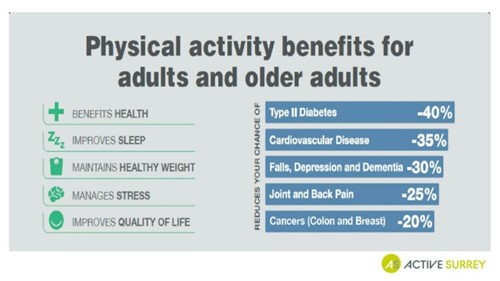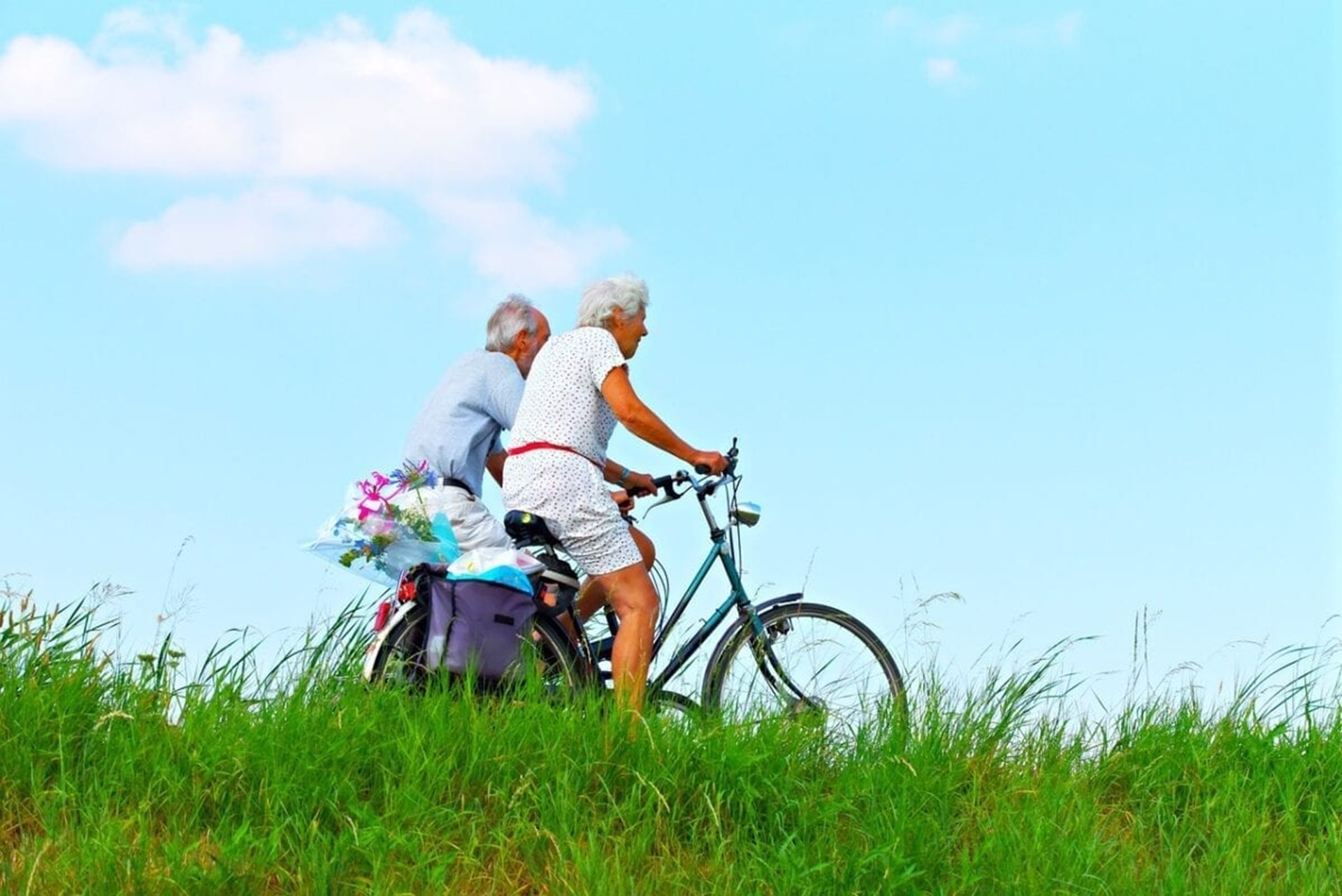The Surprisingly Significant Health Benefits of Exercise – do you Love to Move?
Published: 22/10/2019
Now, I love a bit of exercise – in fact I have turned into a bit of a running fanatic, I run at least 10k pretty much every day of the week. Mostly it makes me feel pretty good after I have been for a run, it is great reflection time and I think it keeps me in a good frame of mind. So, I don’t need much convincing of the value of exercise but I was amazed at some statistics I heard recently.
A couple of months ago I attended a Surrey Active Ageing Event and heard some great speakers sharing their insights into the importance of exercise, particularly as we age. I have always known that exercise was important to our overall health but was amazed at some of the reports that were shared to demonstrate this.
Life expectancy has increased significantly over the last few decades, however healthy life expectancy has not increased at the same rate. This means that, on average we are living longer but a larger proportion of our life is spent living in ill health. The belief is that if we can get more exercise, particularly into our later years then we will be able to remain healthy for longer.
Proportion of adults taking the CMO Guidelines for Exercise
| 19-64 year olds | 34% men 27% women |
| 65+ | 13% men 10% women |
| 75 + | 5% |
– Health Survey England 2016
The benefits of exercise have been widely reported – we know that exercise helps keep weight down and can help you sleep. But did you know that it significantly reduces the risk of falls and reduces the risk of developing dementia by 30%? The table below shows some of the health benefits of physical activity.

Are we Getting Enough Exercise?
I hope that all the above is enough to convince you to make sure you are getting enough exercise. The next question is “How much exercise should I take?”
The CMO (Chief Medical Officer) guidance from 2011 for weekly exercise is;
“75 mins of vigorous intensity (breathing fast, difficulty talking) OR 150 mins of moderate exercise (increased breathing, able to talk) OR a combination of both”
However the main thing is that some exercise is better than none and if you are not currently doing any then start small and gradually build it up.
Why do we Stop Exercising as we get Older?
The statistics shared at the start of this blog show that as a rule we really slow down and stop exercising as we age – with only 5% of people over 75 taking the recommended amount of exercise. Why is that?
In my opinion I think there are two main reasons for this;
- Social Norm: it is generally accepted that as we get older we cannot do as much, therefore we are expected not to. If something is expected of us we normally live up to it.
- Society is not set up for Older People to exercise: gyms and other places of exercise promote themselves with pictures of fit young people, glistening with sweat working out. This does not encourage older people to visit. Sports clubs are often set up for younger people, making it harder for older people to get involved.
We may need to adapt what exercise we take as we get older, I may not be able to run a marathon any more when I am 75 but if I can’t run then I am certainly still going to be cycling or walking regularly.
Different Options for Exercise for the Elderly
Having said that, many places don’t really encourage exercise for the older generations but there are numerous options around; I am going to highlight just a few;
- Walking – it seems an obvious one but a bit of walking can be great exercise and a bit of fresh air is a great way to brighten the day. Whether that is a walk in the woods, a walk to the local shops or just a walk around the block. It all helps.
- Exercise Groups – there are more and more groups that promote more inclusive exercise. Many gyms now offer specific classes for older people, whether that is a relaxed swimming class, yoga, pilates, cycling or more. Have a look around, ask your local gym and see what is on offer. The thought of going is often much harder than actually going. If you are unsure, ask a friend or family member to go along with you for the first couple of visits. We are in the process of starting up some Love to Move Groups, these are designed by the British Gymnastics Foundation and consist of chair based exercises that also support cognitive function.*
- Activity Clubs or Groups – these may be similar to some of the exercise groups detailed above but are more about enjoying an activity that happens to give you a bit of exercise as well. As Right at Home we run an Inclusive Cricket group at Farnham Leisure Centre, this is fantastic fun and caters for anyone, we have had people in wheelchairs, people living with dementia all taking part and enjoying themselves. There are also groups like walking football, sailing clubs, netball and many others if you have a look around.
Summary
In summary, sometimes as you age, or if you are incapacitated in some way, you need to re-think how you live your life a little. Just because you can no longer ride your bike doesn’t mean you should stop exercising, you just need to find a different way to do so. When I speak to our clients I am always interested in their outlook on life and am impressed by so many of their stories and achievements. What really inspires me are the people who do stay strong and adapt as they age, ensuring that they keep making the most of what they can still do rather than worrying too much about what they are not able to do.
If you would like our support in getting a bit more exercise and live in any of the following areas: Farnham, Fleet, Farnborough, Guildford, Godalming, Alton, Bordon then do get in touch.
*Love to Move – if you are interested in either attending one of these groups or in helping us set up a local group then do please get in touch.
Alastair Shanks
MD, Right at Home GF

